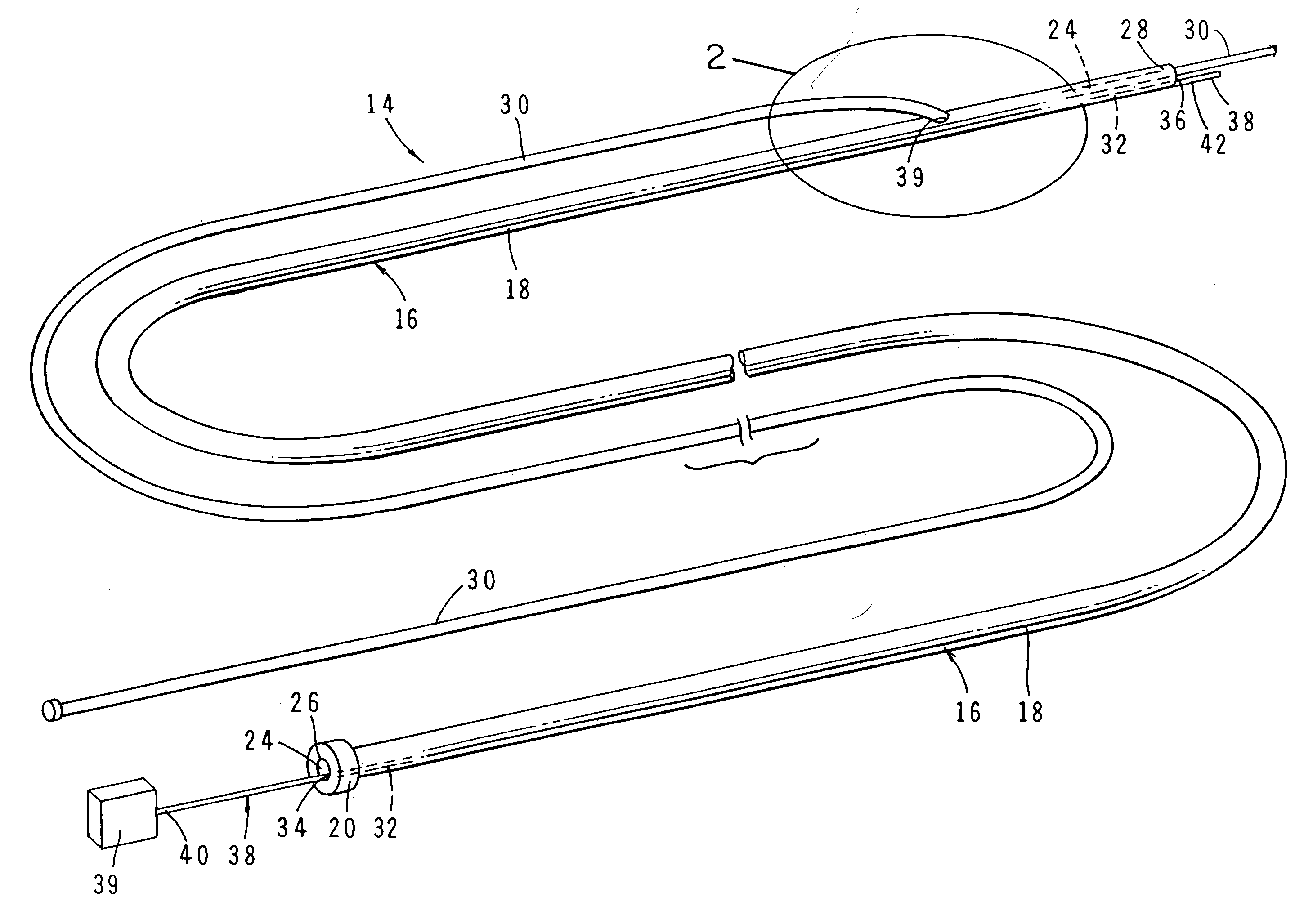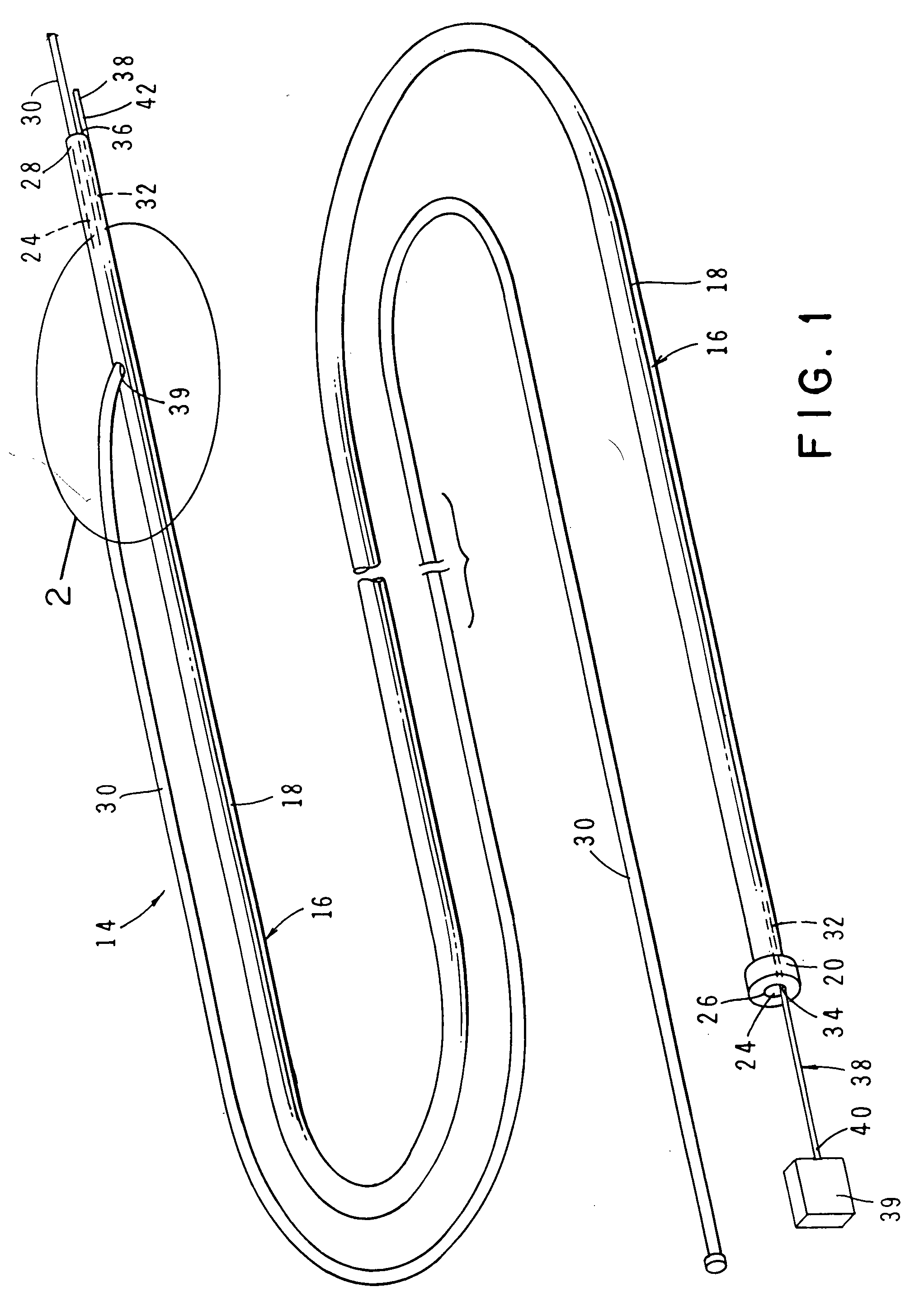Intravascular catheter
a catheter and intravascular technology, applied in the field of medical devices, can solve the problems of long convalescence period, surgeons may have greater difficulty in guiding the guide wire through the occluded area, and dangerous open chest surgery, and achieve the effect of simple construction and convenient us
- Summary
- Abstract
- Description
- Claims
- Application Information
AI Technical Summary
Benefits of technology
Problems solved by technology
Method used
Image
Examples
Embodiment Construction
[0040] Referring to the drawings and particularly to FIGS. 1 through 3, one form of the intravascular catheter system of the invention is there shown and generally designated by the numeral 14. The catheter system here comprises a catheter 16 having an outer side wall 18, a proximal end 20 and distal end 22. As can be seen by referring to FIGS. 2 and 3, catheter 16 is provided with a first passageway 24 (FIG. 2) having a diameter of about 0.035 inches, a proximal end 26 and a distal end 28. Catheter 16 is preferably formed of a biocompatible and hydrophilic compatible material, such as a lubricous polyimide or polyethylene.
[0041] As indicated in FIG. 2, a conventional steerable guide wire 30 is slideably receivable within the first passageway 24 and is movable between first and second positions. While various types of steerable guide wires can be used in the catheter assembly of the invention, guide wire 30 is preferably constructed from a flexible, wire-like metal member having a ...
PUM
 Login to View More
Login to View More Abstract
Description
Claims
Application Information
 Login to View More
Login to View More - R&D
- Intellectual Property
- Life Sciences
- Materials
- Tech Scout
- Unparalleled Data Quality
- Higher Quality Content
- 60% Fewer Hallucinations
Browse by: Latest US Patents, China's latest patents, Technical Efficacy Thesaurus, Application Domain, Technology Topic, Popular Technical Reports.
© 2025 PatSnap. All rights reserved.Legal|Privacy policy|Modern Slavery Act Transparency Statement|Sitemap|About US| Contact US: help@patsnap.com



